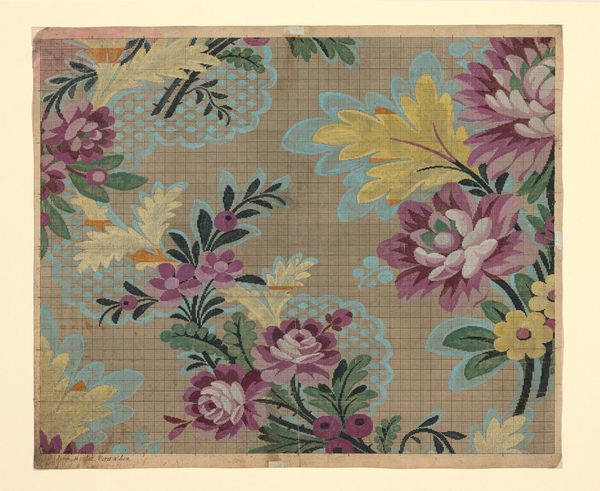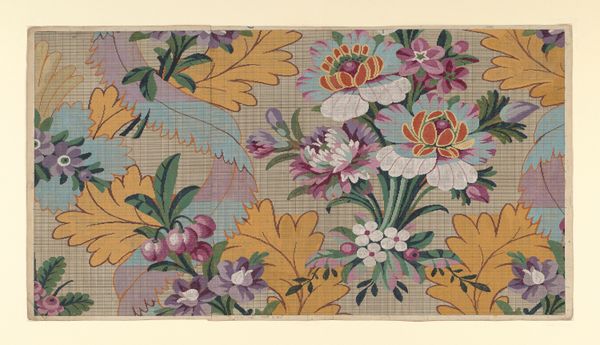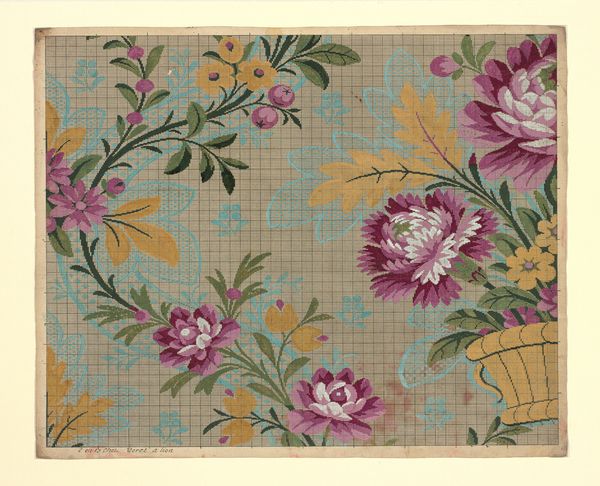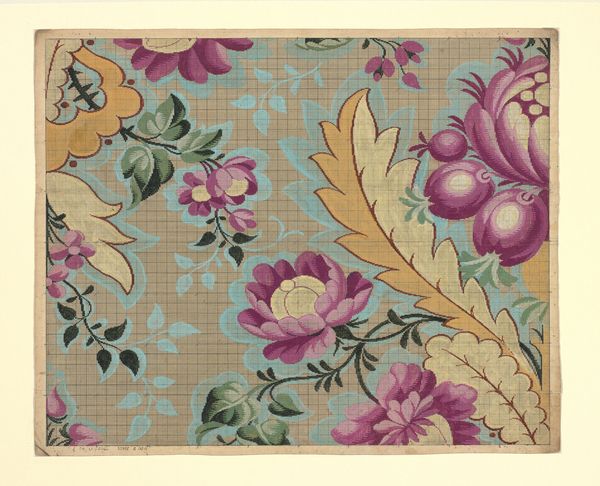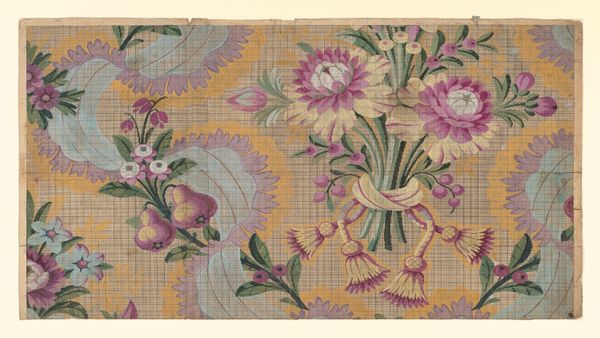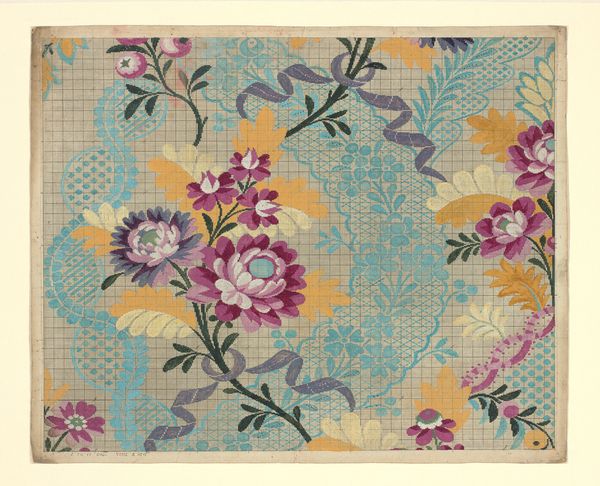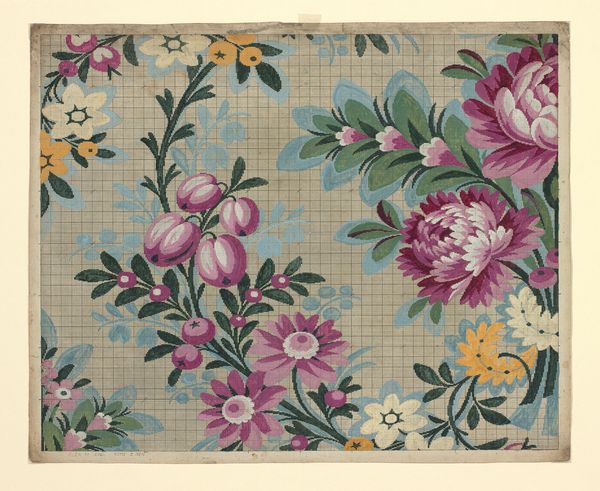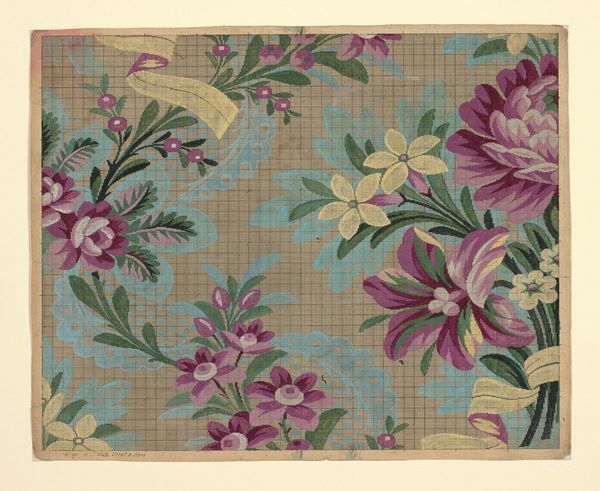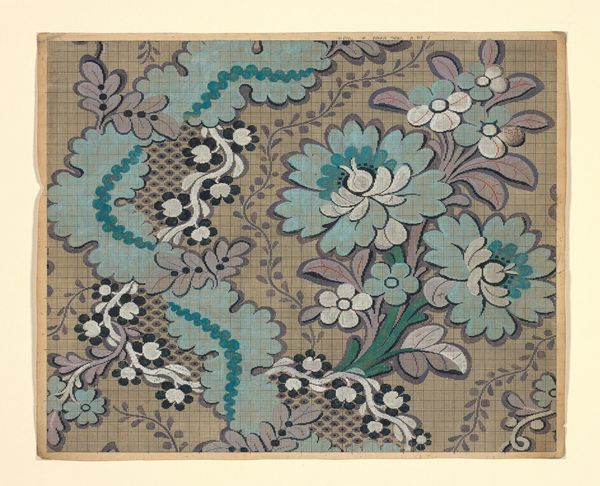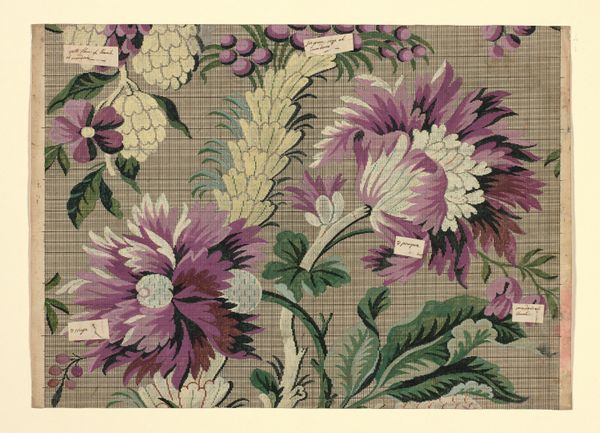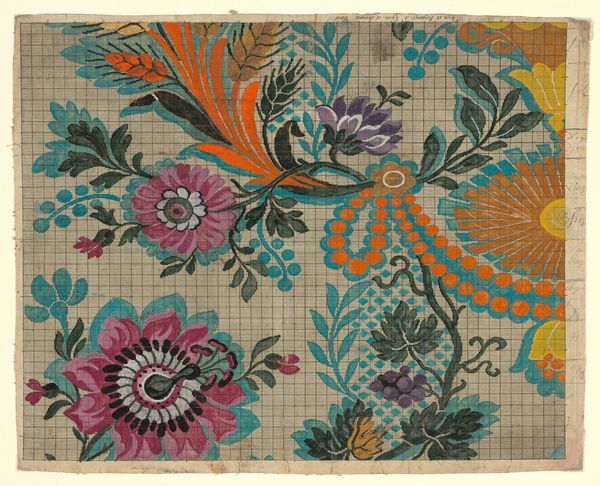
drawing, etching, textile, paper, ink
#
drawing
#
etching
#
textile
#
paper
#
text
#
ink
#
rococo
Dimensions: 425 × 528 mm (image); 440 × 530 mm (plate); 450 × 557 mm (sheet)
Copyright: Public Domain
Editor: Here we have "Mise-en-carte (Point-paper)" by Germain Frères, made around the 1760s. It’s a drawing in ink, etching, and textile on paper. It strikes me as incredibly detailed and precise; almost mathematical in its layout with those overlaid grids, but softened by the Rococo floral design. How do you interpret the relationship between those contrasting elements? Curator: The gridded structure is crucial. The visible grid operates as the foundational architecture upon which the floral motif is constructed. Note the interplay of line, form, and color; each bloom and leaf meticulously charted, its very being dictated by this network of ordered space. Observe how each intersects and overlaps the grid. The design breathes within its imposed geometric boundaries. Editor: So, the beauty comes not despite the grid, but *because* of it? Are you saying that there's no tension, and everything just blends? Curator: Precisely. It's through that visual constraint that we perceive the rococo elements in this textile drawing. It’s within these constraints, the tension and release in line and shape, where we apprehend beauty, where we appreciate the order beneath seeming chaos. How do you feel about that apparent lack of spontaneity? Editor: That’s interesting! At first, I thought it was quite rigid, but understanding that structure creates space for something else changes my perspective completely. Curator: Indeed, by understanding the formal elements at play, the relationship between line, grid and floral form, we can see a carefully balanced synthesis that marries order and decoration.
Comments
No comments
Be the first to comment and join the conversation on the ultimate creative platform.
